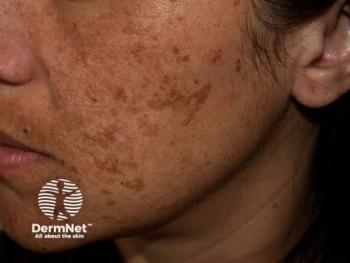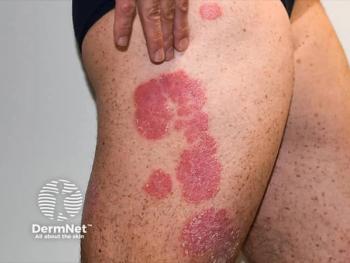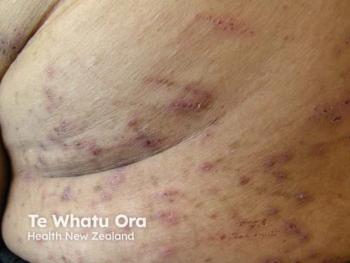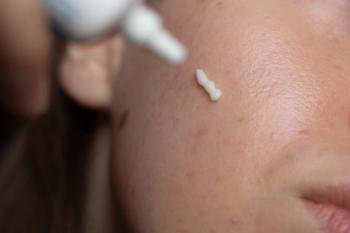
Laser Advancements Transform Skin Rejuvenation
Key Takeaways
- Laser technologies have evolved into precise, minimally invasive tools, enhancing skin rejuvenation with faster recovery times and expanded treatment options.
- Fractional lasers deliver targeted energy, speeding healing and reducing complications, effectively treating wrinkles, acne scars, and sun damage with minimal downtime.
A review found repeated laser treatments show cumulative benefits, including improved collagen density and skin elasticity over time.
Editor's Note (July 2025):
We would like to acknowledge and address a serious oversight related to the below article “Laser Advancements Transform Skin Rejuvenation.” After publication, it was brought to our attention that the article contains language and structure that closely mirror a previously published, peer-reviewed article in the Journal of Cosmetic Dermatology, titled “
While the intent of the article was to summarize current advancements in laser technologies for a clinical audience, proper attribution to the original authors and publication was regrettably omitted. We recognize and respect the original work and contributions and sincerely apologize for this oversight.
The editorial team has taken steps to review our processes to ensure this does not happen again. We are committed to maintaining the highest standards of content integrity and transparency.
— Dermatology Times Editorial Team
-------------------------------------------------------------
Laser technologies have significantly transformed dermatology, particularly in skin rejuvenation.1 Over recent decades, lasers have evolved from basic tools into sophisticated devices that offer precise, targeted treatments with minimal invasiveness and faster recovery times. This progress has expanded the range of conditions treatable by lasers and improved their customization and safety.2 There are various types of lasers, including ablative lasers that remove outer skin layers and non-ablative fractional lasers that stimulate collagen production without damaging the skin’s surface. Fractional lasers, in particular, enhance results with minimal downtime by targeting microscopic skin areas. Understanding how different wavelengths interact with skin, the process of selective photothermolysis, and the body’s healing response is crucial for optimizing laser treatments. These advancements have made skin rejuvenation more effective and accessible.3
A recent review discussed the mechanisms, advantages, and personalized applications of laser technologies for diverse skin conditions, with the goal of providing insights into the scientific advancements that have improved the safety and efficacy of these treatments.
Methods
This review analyzed articles from the past 20 years on laser skin resurfacing, using keywords like “skin rejuvenation” and “laser technology” to search databases such as PubMed, Cochrane, Scopus, and Google Scholar. It includes a wide range of research, from peer-reviewed studies and clinical trials to meta-analyses, covering various laser technologies: ablative, non-ablative, fractional, hybrid, and picosecond. The review systematically examines the evolution, mechanisms, benefits, and potential adverse events of these technologies.
Results
Out of the 329 articles screened, researchers included 92 that met the criteria based on relevance, study design, and recent advancements in laser technology for skin rejuvenation.The data gathered was categorized into the following sections:
Fractional Lasers
The review stated that fractional lasers have significantly advanced skin rejuvenation by delivering targeted energy in a pixeled pattern, which speeds up healing and reduces complications compared to traditional ablative lasers. These lasers create microthermal damage that stimulates collagen production, effectively treating various skin issues such as wrinkles, acne scars, and sun damage. Recent innovations have improved customization and precision, enhancing treatment outcomes and patient experience. Fractional lasers are praised for their minimal downtime and effectiveness in skin remodeling.4
Ablative Lasers
CO2 and Er:YAG lasers are well-established in skin resurfacing, according to the review, known for their effectiveness in treating photoaging, scars, and wrinkles. CO2 lasers target water molecules in the skin for deep tissue ablation and collagen remodeling, while Er:YAG lasers offer a more superficial approach with reduced recovery time. Both technologies show superior efficacy compared to other treatments and are often used in combination with other modalities to enhance results.5
Non-Ablative Lasers
Non-ablative lasers (NAFL), such as Nd:YAG and pulsed-dye lasers, provide skin rejuvenation with minimal downtime by targeting deeper skin layers to stimulate collagen without damaging the surface. The review stated these lasers are effective for improving skin texture, reducing wrinkles, and treating vascular lesions, offering a gentler alternative to ablative lasers.6
Hybrid Fractional Lasers
Hybrid fractional lasers combine ablative and non-ablative technologies in a single treatment, allowing for comprehensive skin rejuvenation with reduced downtime. Researchers found this approach addresses a range of skin concerns and is noted for its effectiveness and patient satisfaction, providing noticeable improvements with minimal discomfort.7
Picosecond Lasers
Picosecond lasers, known for their ultra-short pulse duration, are effective for treating pigmented lesions, photodamage, and scars with minimal thermal damage. Their ability to induce precise tissue disruption through lLaser-induced optical breakdown makes them versatile and effective for various skin conditions.8
Laser Technologies in Ethnic Skin Rejuvenation
Advancements in laser technologies have improved safety and effectiveness for darker skin tones by minimizing risks like hyperpigmentation. Technologies such as Nd:YAG and picosecond lasers are particularly suitable for ethnic skin, offering effective treatment with reduced side effects. Researchers noted pre- and post-treatment care is crucial for optimal results.9
Other Considerations
Safety and Adverse Events
The review found ablative lasers have improved in safety and effectiveness, with advancements reducing adverse events and recovery times. They stated proper patient selection, calibration, and post-treatment care are essential to minimize complications. Fractional and hybrid lasers further enhance safety and efficacy, though ongoing research is needed, particularly for darker skin tones.
Histology
Researchers noted different lasers interact with skin tissues in various ways: ablative lasers remove outer layers for immediate results, non-ablative lasers create microthermal zones for deeper collagen stimulation, and fractional picosecond lasers induce minimal thermal damage while promoting skin renewal. They stated that understanding these interactions is crucial for optimizing treatment outcomes.
Long-Term Effects
The review found that repeated laser treatments can enhance skin rejuvenation by cumulatively improving collagen density and skin elasticity. Long-term studies show that tailored, multi-session plans offer sustained aesthetic benefits and improved skin texture.10
Patient Satisfaction
Researchers stated that patient satisfaction with laser treatments is generally high, attributed to visible improvements in skin texture and minimal downtime. Successful outcomes are often linked to realistic expectations, comprehensive pre-treatment consultations, and effective post-treatment care.
Conclusion
The review found that advancements in laser technologies have significantly enhanced skin resurfacing, providing precise and effective treatments for various skin conditions. Ablative lasers like CO2 and Er:YAG target deeper skin layers but require longer recovery and can have more side effects. NAFLs, such as Nd:YAG and fractional erbium, stimulate collagen production with minimal surface damage, offering quicker recovery and fewer side effects. Fractional lasers further improve this balance by treating the skin in a pixelated manner, reducing downtime and risks. Hybrid lasers merge the benefits of both ablative and non-ablative approaches, allowing for customized treatments with reduced side effects and faster recovery.
Researchers found the integration of laser-assisted drug delivery enhances therapeutic outcomes by creating micro-channels in the skin, improving the absorption of topical treatments. They found cooling systems have also advanced, helping to manage pain and minimize side effects, thereby increasing patient comfort and safety. However, limitations such as a focus on short-term results, variability in study designs, and underrepresentation of darker skin tones in research highlight the need for ongoing innovation and research. Overall, they found laser skin resurfacing continues to evolve, offering tailored solutions that improve treatment effectiveness and safety across diverse skin types, setting a new standard in cosmetic dermatology.
References
- Kirkland EB, Gladstone HB, Hantash BM. What's new in skin resurfacing and rejuvenation?.G Ital Dermatol Venereol. 2010;145(5):583-596.
- Carniol PJ, Hamilton MM, Carniol ET. Current status of fractional laser resurfacing. JAMA Facial Plast Surg. 2015;17(5):360-366. doi:10.1001/jamafacial.2015.0693
- Manstein D, Herron GS, Sink RK, et al. Fractional photothermolysis: a new concept for cutaneous remodeling using microscopic patterns of thermal injury. Lasers Surg Med. 2004;34(5):426-438. doi:10.1002/lsm.20048
- Jih MH, Kimyai-Asadi A. Fractional photothermolysis: a review and update. Semin Cutan Med Surg. 2008;27(1):63-71. doi:10.1016/j.sder.2008.01.002
- Clementoni MT, Pedrelli V, Zaccaria G, et al. Newdevelopments for fractional Co2 resurfacing for skin rejuvenation and scar reduction. Facial Plast Surg Clin North Am. 2020;28(1):17-28. doi:10.1016/j.fsc.2019.09.002
- Alexiades-Armenakas MR, Dover JS, Arndt KA. The spectrum of laser skin resurfacing: nonablative, fractional, and ablative laser resurfacing. J Am Acad Dermatol. 2008;58(5):719-740. doi:10.1016/j.jaad.2008.01.003
- Waibel S, Pozner J, Robb C, et al. Hybrid fractional laser: A multi-center trial on the safety and efficacy for photorejuvenation. J Drugs Dermatol. 2018;17(11):1164-1168.
- Haykal D, Cartier H, Maire C, et al. Picosecond lasers in cosmetic dermatology: where are we now? An overview of types and indications. Lasers Med Sci. 2023;39(1):8. Published 2023 Dec 18. doi:10.1007/s10103-023-03945-5
- Kaushik SB, Alexis AF. Nonablativefractional laser resurfacing in skin of color: evidence-based review. J Clin Aesthet Dermatol. 2017;10(6):51-67.
- Manuskiatti W, Punyaratabandhu P, Tantrapornpong P, et al. Objective and long-term evaluation of the efficacy and safety of a 1064-nm picosecond laser with fractionated microlens array for the treatment of atrophic acne scar in Asians. Lasers Surg Med. 2021;53(7):899-905. doi:10.1002/lsm.23368
Newsletter
Like what you’re reading? Subscribe to Dermatology Times for weekly updates on therapies, innovations, and real-world practice tips.


















